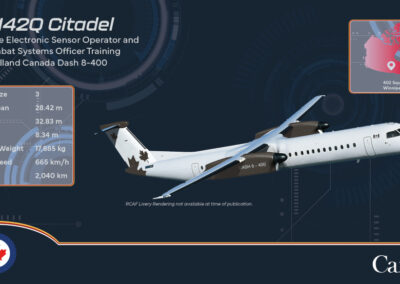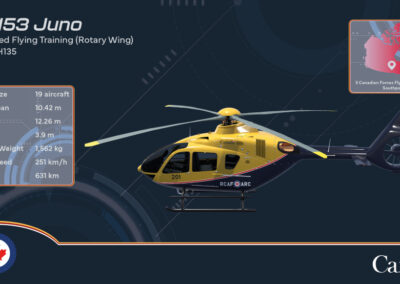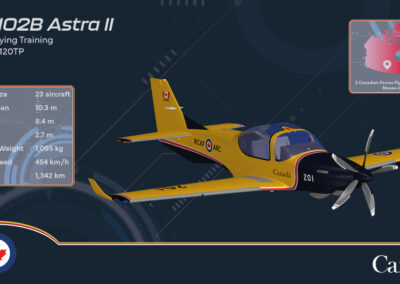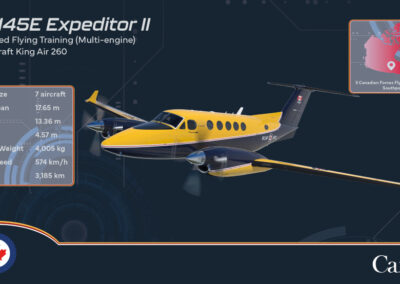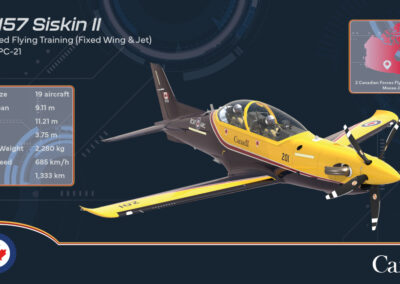The Royal Canadian Air Force (RCAF) has unveiled the aircraft that will train the next generation of aircrew as part of its new Future Aircrew Training (FAcT) program. These aircraft will replace several legacy systems and are being introduced as part of a modernized training initiative in partnership with SkyAlyne.
The new aircraft are more than just tools for learning—they also pay tribute to the RCAF’s 101-year history through their names and paint schemes. Each design incorporates the traditional “training yellow” and dark blue colours, along with a nod to the iconic red-and-white lightning bolt used on RCAF aircraft since the Second World War. This “Reflect Forward” design concept symbolizes a bridge between the Air Force’s storied past and its modern future.
A Look at the New Fleet
Five new aircraft types will form the core of the FAcT program, each with a unique name and role:
- CT-102B ‘Astra II’
The Astra II will serve as the basic flying trainer for new pilots. It’s an upgraded version of the current Grob 120A (CT-102A) used in training. “Astra” means “star” in Latin, tying into the RCAF motto “Through Adversity to the Stars.” This new fleet of 23 aircraft will be based at 15 Wing Moose Jaw, Saskatchewan.
- CT-157 ‘Siskin II’
This advanced trainer will prepare pilots for more specialized training, including multi-engine aircraft and fighter jets. Named after the Armstrong Whitworth Siskin—the RCAF’s first true fighter aircraft and namesake of its original aerobatic team—19 Siskin IIs will also be based at 15 Wing Moose Jaw.
- CT-145E ‘Expeditor II’
Used for multi-engine training, the Expeditor II is based on the Beechcraft King Air 260. Its name honours the original CT-128 Expeditor, a Second World War-era aircraft used for training and transport roles. Seven Expeditor IIs will be based at Southport, near Portage la Prairie, Manitoba.
- CT-153 ‘Juno’
Future helicopter pilots will learn their skills on the Airbus H135, now designated the CT-153 Juno. The name commemorates Juno Beach, the Canadian landing zone on D-Day in 1944. These helicopters will be stationed at Southport, MB.
- CT-142Q ‘Citadel’
The Dash 8-400 Citadel will train Air Combat Systems Officers and Airborne Electronic Sensor Operators. The name is a tribute to Canada’s historic defensive fortresses—the Citadelle of Quebec and the Halifax Citadel. Three Citadel aircraft will be based at 17 Wing Winnipeg.
The FAcT program replaces and combines three existing training efforts: NATO Flying Training in Canada (NFTC) in Moose Jaw, the Contracted Flying Training and Support (CFTS) program in Portage la Prairie, and the current ACSO/AES Op training conducted by the RCAF at 402 Squadron in Winnipeg.
Together, these new aircraft and the modernized training approach are set to shape the future of Canada’s Air Force and ensure it remains ready to meet evolving challenges both at home and abroad.







